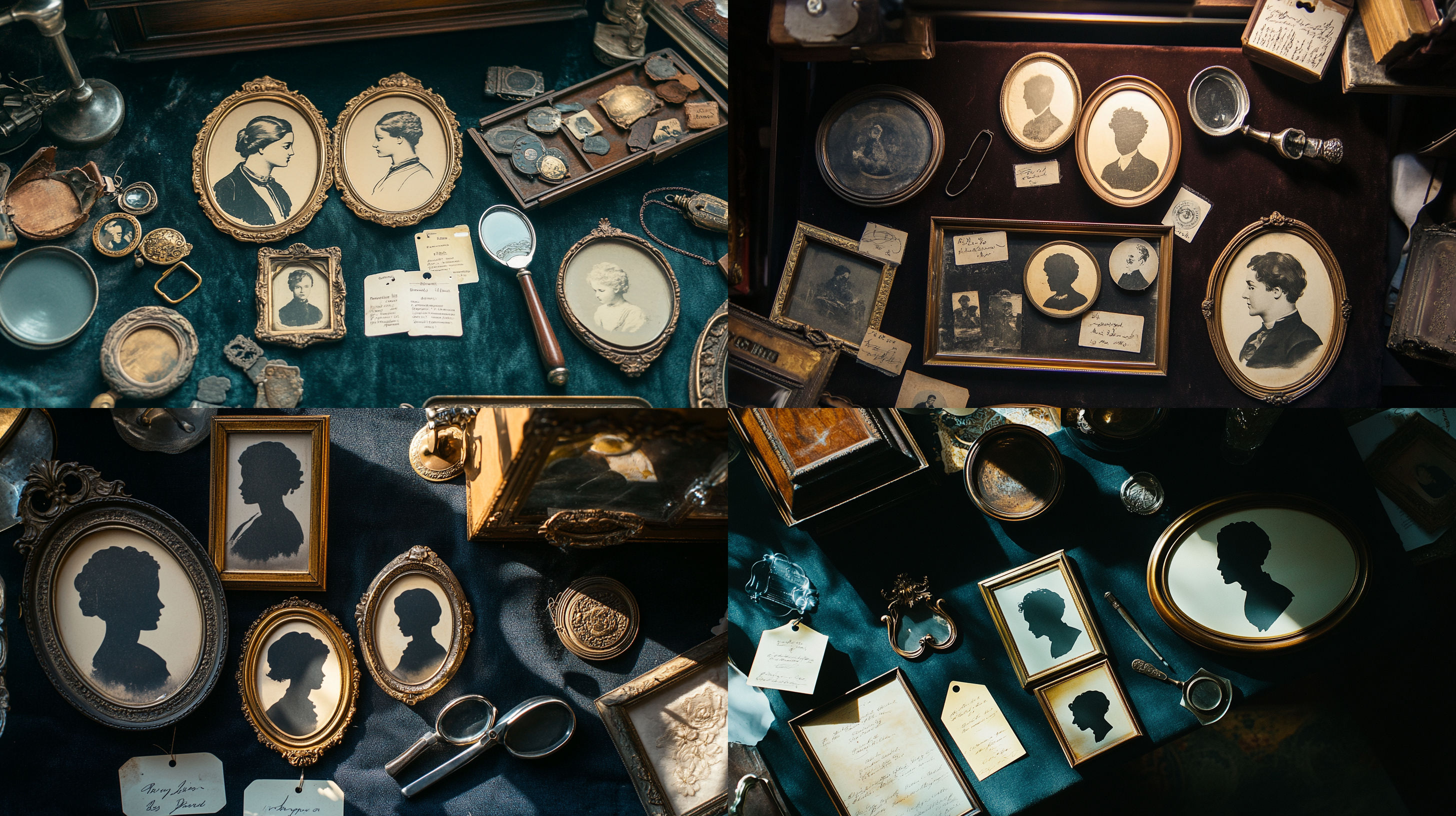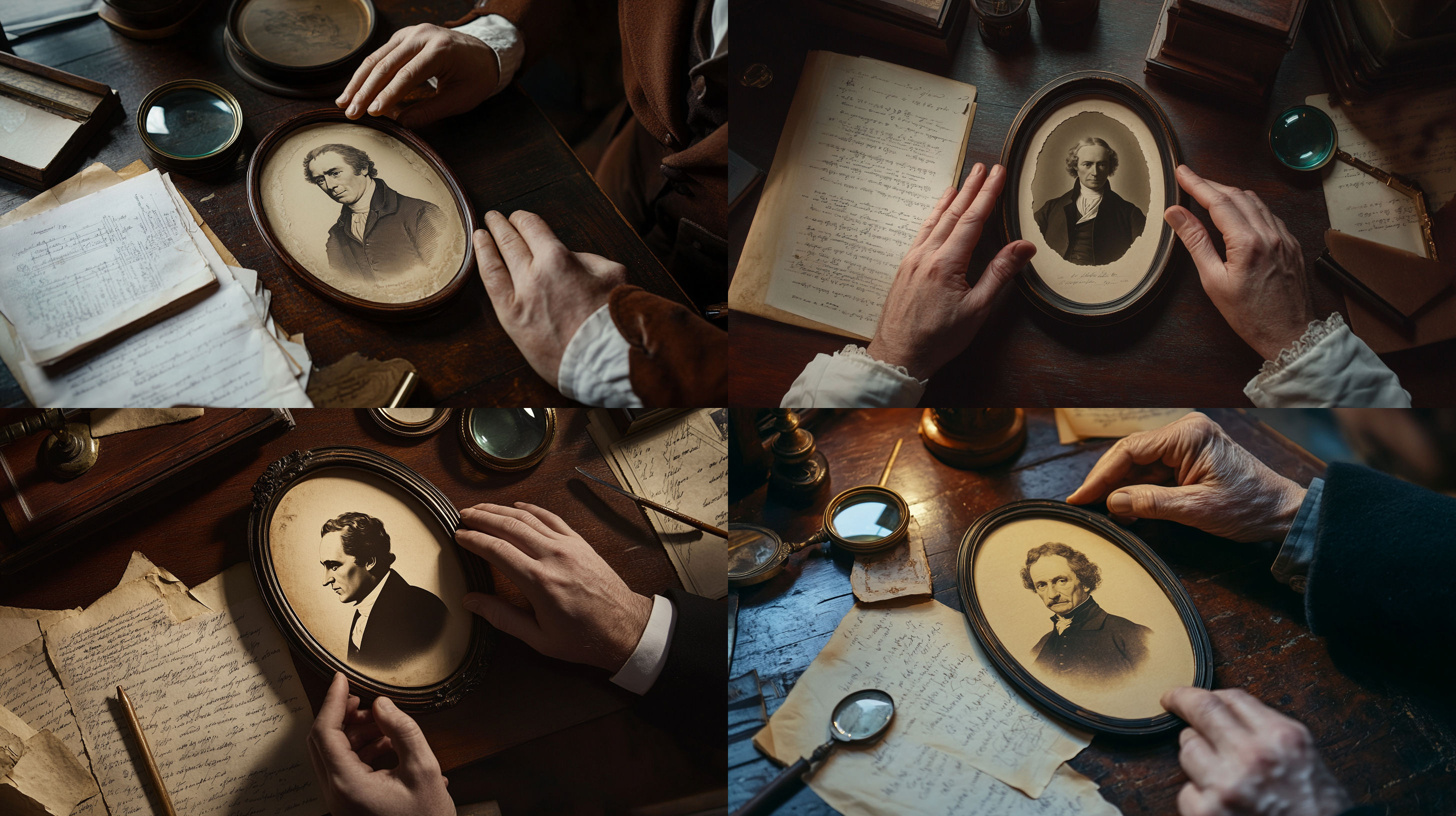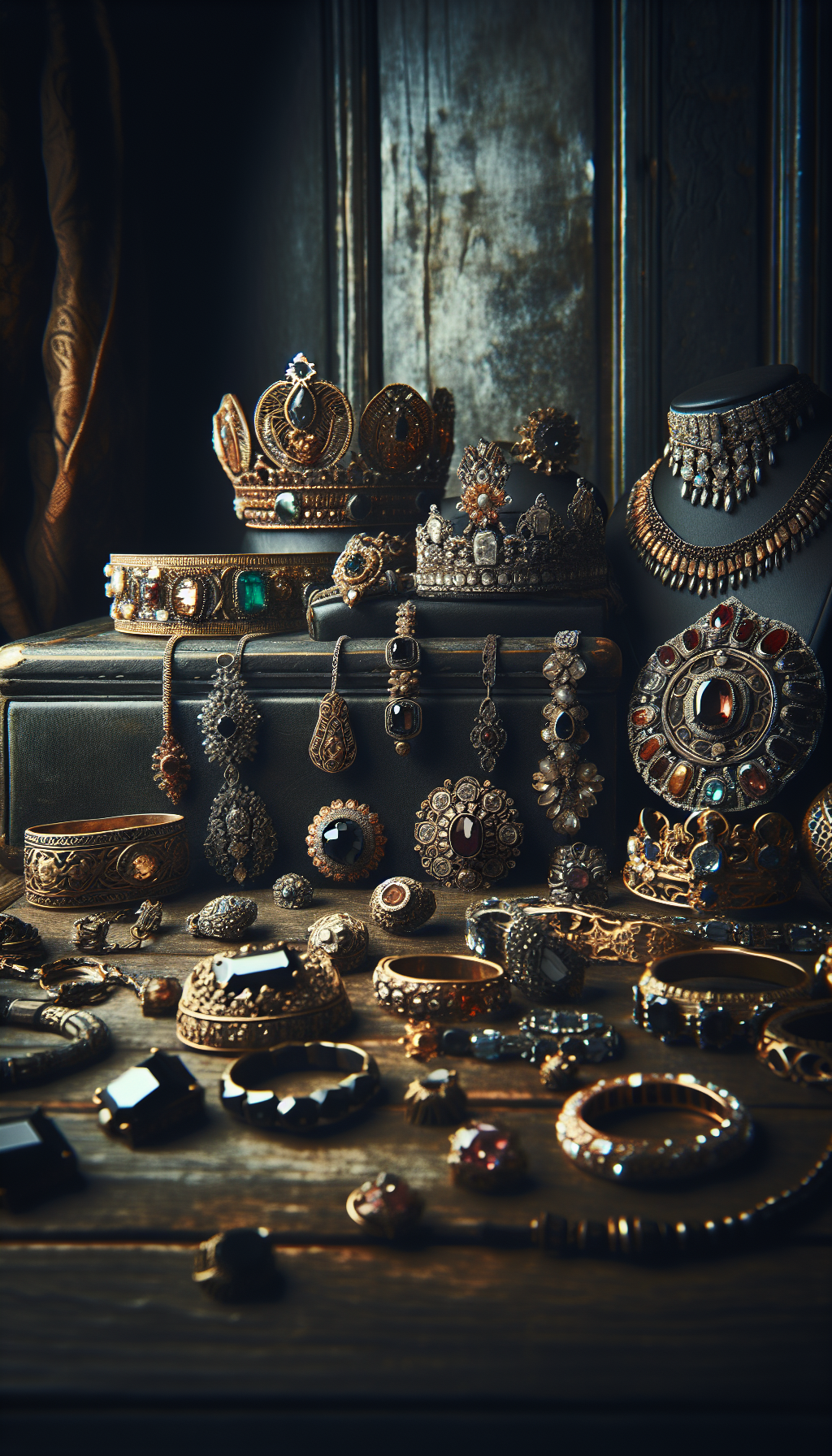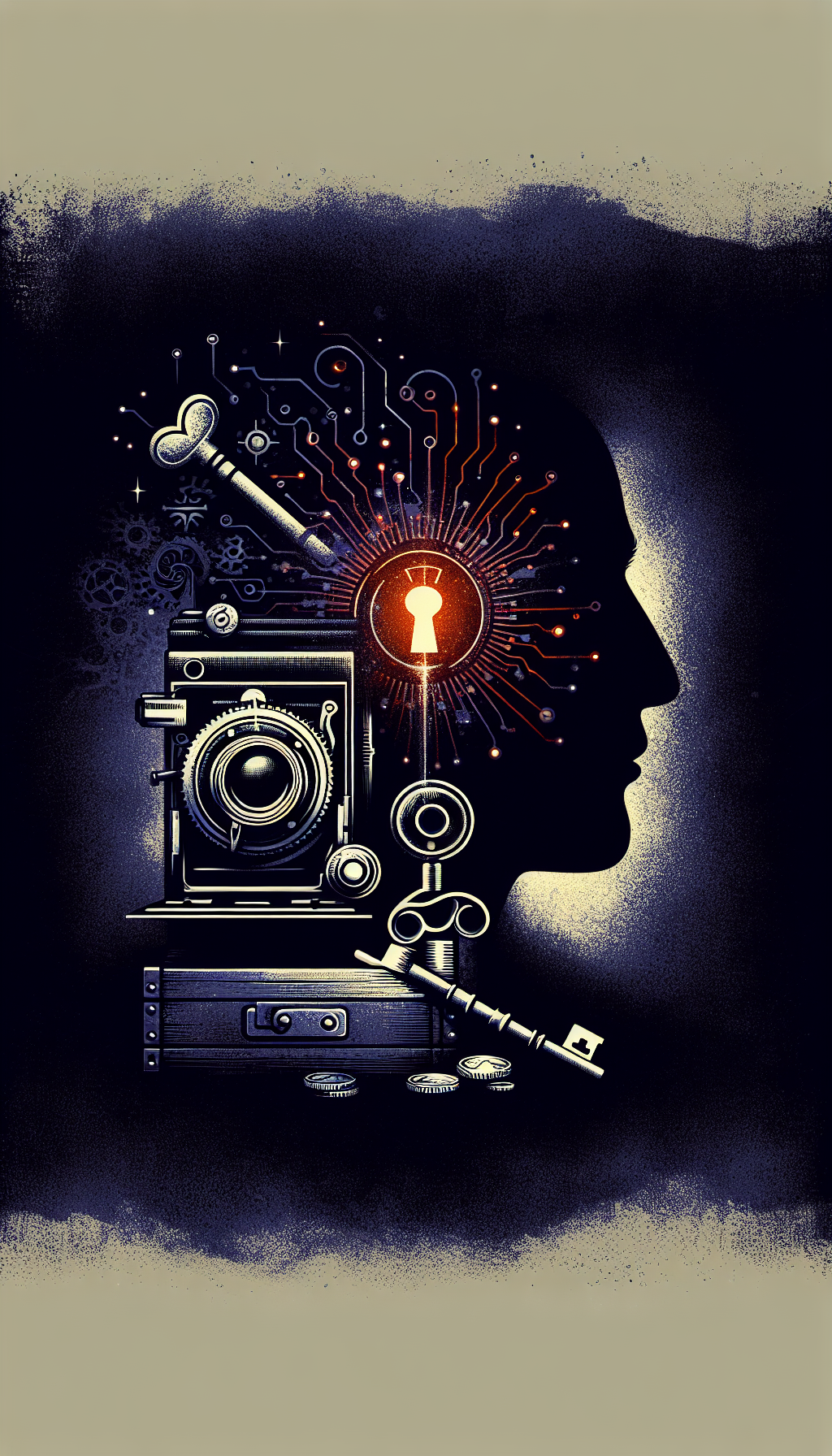Antique Silhouette Pictures Value: Collector’s Guide
Antique silhouette pictures, often referred to as “shadows” or “profiles,” represent one of the most distinctive portrait forms of the 18th and 19th centuries. These elegant black profiles against light backgrounds capture the essence of their subjects with remarkable simplicity and grace. Today, these historic portraits have become highly sought-after collectibles, with values ranging from under $100 for common Victorian examples to several thousand dollars for rare, signed pieces by renowned artists.
In this comprehensive guide, we’ll explore the fascinating world of antique silhouettes, their historical significance, the factors that determine their value, and what collectors should look for when building a collection or assessing a piece’s worth.
The History & Evolution of Silhouette Portraits
The art of silhouette portraiture emerged in the mid-18th century and reached peak popularity in the early 19th century. Named after Étienne de Silhouette, a French finance minister known for his cost-cutting measures, these “shadow portraits” offered an affordable alternative to expensive painted miniatures.
Evolution of Silhouette Portraiture
- 1750s-1770s
Early Development
Silhouettes gain popularity in Europe as affordable portraits. Early examples were often painted rather than cut. - 1770s-1830s
Golden Age
The height of silhouette popularity. Professional artists like John Miers and Auguste Edouart establish themselves as masters of the form. - 1830s-1860s
Photography Competition
The rise of daguerreotypes and early photography begins to compete with silhouettes, though the art form remains popular. - 1860s-1900s
Victorian Revival
Silhouettes experience renewed interest during the Victorian era, often featuring more elaborate designs and settings.
The silhouette’s popularity stemmed from its affordability and portability. Before photography, these black profiles offered the middle class a chance to capture a likeness of loved ones at a fraction of the cost of a painted portrait. Skilled artists could cut a perfect profile in minutes, making silhouettes popular attractions at fairs, markets, and society gatherings.
Types of Antique Silhouettes
Understanding the different types of antique silhouettes is essential for proper identification and valuation. According to the Arlington Historical Society, there are three primary types:
1. Painted Silhouettes
- Technique: Created by applying black paint or ink directly onto a surface (typically paper, card, or plaster)
- Characteristics: Often feature fine details like eyelashes, jewelry, or clothing textures
- Notable Artists: John Miers, Charles Rosenberg
- Value Range: $200-$1,500 depending on artist and condition
2. Hollow-Cut Silhouettes
- Technique: Cut from light-colored paper, with the negative space mounted against a dark background
- Characteristics: Crisp, precise edges; often mounted on black silk or paper
- Notable Artists: William King, Patience Wright
- Value Range: $300-$2,000 for signed examples in good condition
3. Cut-Out Silhouettes
- Technique: Cut directly from black paper and mounted on a light background
- Characteristics: Often show remarkable detail in hair and clothing
- Notable Artists: Auguste Edouart, William Henry Brown
- Value Range: $400-$3,000+ for recognized artists; Edouart examples can reach $5,000+
Factors That Determine Silhouette Value
Like most antiques, silhouette values can vary dramatically based on a combination of factors. According to CT Country Antiques, collectors should consider these key elements when assessing value:
Key Value Factors for Antique Silhouettes
1. Artist Attribution
Silhouettes by recognized artists command premium prices. Look for signatures, labels, or distinctive styles that can help identify the creator. Some of the most valuable silhouettes come from these notable artists:
- Auguste Edouart (1789-1861): Famous for full-length cut paper silhouettes with exceptional detail
- John Miers (1758-1821): Known for precise painted profiles with gold highlights
- William King (active 1804-1830): American artist known for hollow-cut silhouettes with distinctive styling
- Charles Rosenberg (active 1786-1820): Known for painted silhouettes with bronzing details
2. Age and Period
- Georgian (1714-1837): Generally the most valuable period, particularly 1790-1820
- Victorian (1837-1901): More common but still collectible; often feature more decorative frames
- Early 20th Century: Mass-produced examples have lower values, typically under $100
3. Subject Matter and Historical Significance
Silhouettes featuring famous historical figures or subjects of special interest can command significant premiums:
- Historical Figures: Silhouettes of George Washington, Martha Washington, or other notable individuals can sell for 5-10 times the value of an anonymous subject
- Military Subjects: Officers in uniform, particularly from the Revolutionary or Napoleonic periods
- Unusual Subjects: Children, multiple figures, or subjects with distinctive props or settings
4. Condition Issues
Condition Assessment Checklist
Factors that impact silhouette value:
- Paper intact with no tears, creases or water damage
- Original frame in good condition
- No fading of the black image or background
- No repairs, inpainting or restoration
- Original backing and mounting materials present
- Any original labels or inscriptions intact
5. Frame and Presentation
Original period frames significantly enhance value. Look for:
- Oval brass frames: Common for Georgian examples
- Acorn or bird’s-eye maple frames: Popular in American silhouettes
- Ornate gilt frames: Often found on higher-end Victorian examples
- Convex glass: Adds value to the overall presentation

Current Market Values for Antique Silhouettes
Based on auction results, dealer pricing, and online marketplace data, here’s a breakdown of current market values for different categories of antique silhouettes:
Antique Silhouette Value Guide
Market values based on recent sales (2023)
</tbody>
</table>
According to auction data from Carter’s Price Guide, Victorian silhouettes have sold for prices ranging from $12 for common examples to $2,923 for exceptional pieces.
Recent Notable Sales
Recent auction results provide valuable insights into the upper end of the market:
- An Auguste Edouart full-length silhouette of a gentleman: $4,850 (Sotheby’s, 2022)
- A pair of hollow-cut silhouettes by William King: $1,800 (Christie’s, 2021)
- A George Washington eglomise silhouette: $2,400 (Invaluable auction, 2022)
- Queen Louise of Prussia silhouette: $56.25 (eBay, 2023)

How to Identify Authentic Antique Silhouettes
Authentication is critical when valuing silhouettes, as reproductions and modern examples are common. Here are key indicators of authenticity:
Paper and Materials Analysis
- Paper Age: Georgian and early Victorian silhouettes were typically created on handmade laid paper with visible chain lines when held to light
- Card Stock: Backing materials should show appropriate age patina and be consistent with the period
- Black Material: Period silhouettes used lampblack (a carbon pigment) that maintains a true black color; modern reproductions often fade to brown or gray
Construction Techniques
- Cutting Style: Examine the precision and fluidity of cuts under magnification; period artists displayed remarkable skill
- Backing Methods: How the silhouette is secured to its backing can indicate age; period examples often used period-appropriate adhesives or tiny pins
- Frame Construction: Original frames will show appropriate age indicators: handmade nails, old wood, original glass
Expert Tips
- Study museum examples to train your eye
- Examine inscriptions and handwriting for period-appropriate styles
- Be wary of “too perfect” examples, as genuine antiques typically show some imperfections
- Consider having important pieces examined by a specialist in works on paper
Where to Buy and Sell Antique Silhouettes
Whether you’re looking to add to your collection or sell a piece, understanding the marketplace is essential:
Top Venues for Purchasing Antique Silhouettes
Specialized Dealers: Galleries and shops that focus on historical portraits often have authenticated examples with proper provenance
Auction Houses: Major auction houses like Christie’s and Sotheby’s regularly offer fine examples, while regional auction houses may have more affordable options
Online Marketplaces: Platforms like 1stDibs offer curated selections of higher-end silhouettes, while eBay provides a wider range of options and price points
Antique Shows: Many dealers specialize in silhouettes and bring their finest examples to major antique shows
Etsy Vintage Market: The Etsy marketplace offers numerous vintage silhouettes, though careful authentication is essential
Best Practices for Sellers
If you’re looking to sell a silhouette:
- Have valuable pieces professionally appraised before selling
- Research comparable sales on platforms like LiveAuctioneers or Invaluable
- Consider specialized dealers for museum-quality pieces
- Provide as much provenance and historical background as possible
- Ensure proper photography that captures details and condition
- Never attempt to restore or “improve” an antique silhouette, as this typically reduces value
Care and Preservation of Antique Silhouettes
Silhouettes are particularly vulnerable to environmental damage. To preserve their condition and value:
Display Recommendations
- Hang away from direct sunlight, which can fade paper and damage frames
- Maintain stable humidity (40-50%) and temperature (65-70°F)
- Consider using UV-filtering glass or acrylic when reframing
- Never separate a silhouette from its original frame or backing without professional assistance
Storage Solutions
- Store flat in acid-free folders and boxes if not displaying
- Never use tape, glue, or modern adhesives on antique silhouettes
- Keep away from basements, attics, and areas with temperature fluctuations
- Use cotton gloves when handling to prevent oils from transferring to paper
Professional Conservation
For valuable silhouettes with condition issues, consult a paper conservator specializing in historical works on paper. Professional conservation can:
- Stabilize fragile paper
- Clean surface dirt without damaging the silhouette
- Address frame issues while preserving original materials
- Provide proper mounting that doesn’t damage the artwork
Common Questions About Antique Silhouettes
What are the different types of antique silhouettes?
There are three basic types of silhouettes:
Painted silhouettes: Created using black ink or paint applied to a base (usually paper, plaster, or occasionally porcelain)
Hollow-cut silhouettes: Cut from light-colored paper with the negative space mounted against a dark background
Cut-out silhouettes: Cut directly from black paper and mounted on a light background
Each type has its own characteristics and value ranges, with painted silhouettes by recognized artists like John Miers typically commanding the highest prices.
How old are silhouette portraits?
The art of cutting profiles from black card became popular in the mid-18th century (around the 1750s). The term "silhouette" wasn't widely used until the early 19th century, named after Étienne de Silhouette, a French finance minister known for his cost-cutting measures.
The peak period for silhouette portraiture was approximately 1780-1840, though the tradition has continued into the 21st century. The oldest collectible silhouettes typically date from the late 18th century, with Georgian-era examples (1714-1837) being particularly prized by collectors.
What makes a silhouette valuable?
Several factors determine a silhouette's value:
- Artist attribution: Signed works by notable artists like Auguste Edouart, John Miers, or William King
- Age: Georgian examples (1780-1830) are generally more valuable than Victorian
- Subject matter: Famous historical figures or unusual subjects command higher prices
- Condition: Damage significantly reduces value
- Original frame: Period frames greatly enhance value
- Provenance: Documented history of ownership increases desirability
- Rarity: Unusual examples, groups, or full-length figures are more valuable
The most valuable silhouettes combine several of these factors—for example, a signed Auguste Edouart full-length portrait of a historical figure in original frame could sell for $5,000 or more.
What is a Victorian silhouette?
Victorian silhouettes were created during Queen Victoria's reign (1837-1901). These portraits have distinctive characteristics:
- Often more decorative than Georgian examples
- Frequently found in ornate gilt frames or decorative oval brass frames
- May include embellishments like gilt highlights, bronzing, or painted details
- Sometimes incorporate decorative cut paper backgrounds or embossed paper mats
- Women typically depicted with period-appropriate hairstyles (centered parts, buns)
- Men often shown with high collars and distinct facial hair styles
Victorian silhouettes are more common than Georgian examples and typically range in value from $150-$450 for anonymous subjects in period frames.
How can I tell if my silhouette is antique?
To determine if a silhouette is truly antique:
Examine the paper: Antique paper has distinct characteristics—handmade paper with visible chain lines when held to light
Study the frame: Original period frames show appropriate wear, old glass, handmade nails, and correct construction techniques
Look for signatures/labels: Many professional silhouettists labeled their work, often on the back
Note the cutting style: Period artists had distinctive techniques visible under magnification
Consider the subject’s appearance: Clothing, hairstyles, and accessories should match the presumed period
If you’re unsure, consult with a specialized dealer or auction house appraiser who can provide expert assessment based on these and other factors.
Building a Collection of Antique Silhouettes
For those interested in collecting antique silhouettes, here are some strategies for building a meaningful collection:
Collecting Themes
- Artist Focus: Collect examples by a specific silhouettist
- Historical Period: Specialize in a particular era, like Georgian or Victorian
- Geographic Region: American, British, or Continental European examples
- Subject Matter: Military figures, children, or occupational subjects
- Technique: Focus on hollow-cut, painted, or cut-paper examples
Tips for New Collectors
- Start affordable: Begin with more common Victorian examples while learning
- Study museum collections: The Royal Collection Trust and other institutions offer excellent online resources
- Join collector groups: Connect with other enthusiasts to share knowledge
- Attend auctions as an observer: Learn market values before investing
- Purchase reference books: Invest in scholarly resources about silhouette history
Collection Management
- Maintain records of provenance and purchase information
- Consider having valuable pieces professionally appraised for insurance
- Rotate displayed silhouettes to minimize light exposure
- Digitally document your collection with high-quality photographs
External Resources for Silhouette Collectors and Sellers
Arlington Historical Society: Types, Techniques and Analysis of Silhouettes
Comprehensive guide to silhouette types and techniques, with valuable information for identification and authentication.
Carter's Antique Price Guide: Victorian Silhouettes
Price guide with auction results for 145 antique Victorian silhouettes, ranging from $12 to $2,923.
Silhouettes By Hand: History of Silhouettes
A brief history of silhouettes from colonial to modern times, exploring the evolution of this art form.
1stDibs: Antique Silhouette Marketplace
Curated selection of high-quality antique silhouettes for sale from reputable dealers.
eBay: Antique Silhouette Listings
Wide range of antique silhouettes at various price points, from affordable decorative pieces to rare examples.
Invaluable: Silhouette Print Auctions
Database of current and past silhouette auctions, useful for tracking market values and trends.
Paul Madden Antiques: Specialist Silhouette Dealer
Specialist dealer offering museum-quality silhouettes with expert identification and authentication.
Royal Collection Trust: Silhouette Resources
Educational resources from the Royal Collection, which includes Queen Victoria's personal silhouette album.
Conclusion: The Enduring Appeal of Shadow Portraits
Antique silhouettes offer collectors a unique window into the past—capturing the essence of individuals from a bygone era in a distinctively elegant artistic medium. Their value lies not only in their monetary worth but in their historical significance as precursors to photography and as representations of ordinary people whose painted portraits would have been financially out of reach.
Whether you’re a serious collector seeking museum-quality examples or simply appreciating these elegant profiles as decorative art, understanding the factors that influence silhouette values helps in making informed decisions. From the masterful cut-paper works of Auguste Edouart to humble hollow-cut profiles by anonymous artists, each silhouette represents a moment in time—a shadow preserved from the past that continues to captivate collectors today.
As with all antiques, education is the key to successful collecting. By studying examples, consulting references, and connecting with specialists, you can develop the knowledge needed to identify quality pieces and build a collection that brings both aesthetic pleasure and potential investment value.
Get a Professional Appraisal
Unsure about your item’s value? Our certified experts provide fast, written appraisals you can trust.
- Expert report with photos and comps
- Fast turnaround
- Fixed, upfront pricing
No obligation. Secure upload.
| Category | Price | Notes |
|---|---|---|
| Museum-quality signed silhouettes by major artists (Edouart, Miers) | $1,500-$5,000+ | Exceptional examples with provenance and original frames |
| Georgian-era hollow-cut silhouettes (1780-1820) | $350-$1,200 | With original frames, good condition |
| Victorian-era cut or painted silhouettes | $150-$450 | Anonymous subjects in period frames |
| Historical figure silhouettes (Washington, Lafayette, etc.) | $500-$3,000 | Value varies greatly based on attribution and quality |
| Group/family silhouettes | $300-$900 | More valuable than single portraits due to rarity |
| Early 20th century revival silhouettes | $50-$150 | Mass-produced examples with limited artistic merit |




